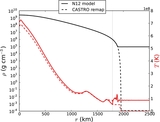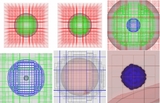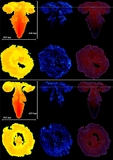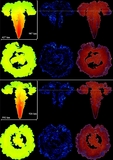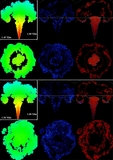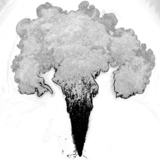Image Details
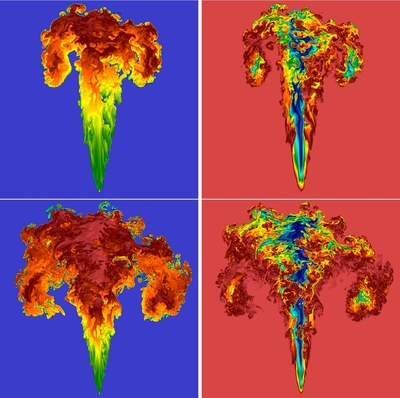
Caption: Figure 11.
BE/ A (left column) and Y e (right column) at t = 0.65 s (top row) and t = 0.8 s (bottom row) for the standard run AV. The color maps increase from blue to red; for BE/ A the range is [7.82, 8.68] and for Y e the range is [0.47, 0.50]. The frames in the top row are 1200 km on a side and those in the bottom row are 2000 km on each side. At early times and in regions closer to the center, the ash temperature is high (Figure 12) and the helium mass fraction is nearly equal to the IGE mass fraction. As the flame progresses to lower densities (bottom row), the temperature in the ash decreases and helium recombination leads to more tightly bound nuclei with larger BE/ A. Electron capture prefers higher density, but there is also a significant abundance of neutron-rich material in a narrow plume about the plume's center, which coincides with the region of tightly bound nuclei. The neutron-rich nuclei now in the outer layers were made deeper in the star and pushed out by a vigorous central flow.
Copyright and Terms & Conditions
© 2014. The American Astronomical Society. All rights reserved.


